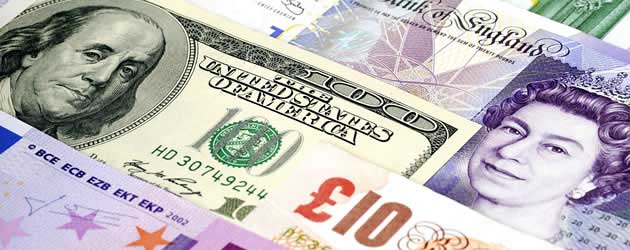
The Pound to US Dollar exchange rate (GBP/USD) is currently trading in the region of 1.6850, over three cents lower than the 5.5-year high of 1.7192 that Sterling hit last month.
Over the past three weeks demand for the Pound has dipped considerably due to concerns that economic growth could cool in the second half of the year.
Or perhaps more pertinently, due to concerns that wage growth could continue to lag behind inflation.
In the United States the picture is slightly different. Although the Bank of England looks set to raise rates before the Federal Reserve, the recent jump in US inflationary pressures, combined with steady wage growth and decent GDP numbers, means that many traders are now forecasting a rate hike from the Fed sooner rather than later.
The primary reason behind Sterling’s strong rallies in June and July was the acceptance among traders and analysts that there would be a substantial time gap between the BoE’s first hike and the Fed’s first piece of monetary tightening proper (tapering asset purchases doesn’t count!). However, with investors now expectant of a much briefer wait, it seems that sentiment has turned negative towards the Pound.
This morning’s UK service sector PMI report has the potential to shape trading patterns over the next few days and weeks.
If the tertiary output score prints significantly higher than the market consensus of 58.0 then there is potential for a turnaround in fortunes for the Pound.
This is because Britain’s dominant service sector accounts for a massive majority 75% of the UK economy. However, if the score disappoints and prints below 58.0 then there is potential for Sterling’s descent to steepen as investors price-in the possibility of softer economic growth in the second half of the year.
Technically speaking the 1.6720-1.6820 range is very important.
A break below 1.6820 could set off a series of sell orders and if support at 1.6720 is breached then it could spell a period of significant weakness in GBP/USD.
During the afternoon US data is forecast to show that domestic growth went form strength to strength during the transition from the second quarter to the third.
June’s factory orders index is expected to have rebounded from May’s -0.5% contraction with a positive 0.6% expansion.
And July’s ISM non-manufacturing report is predicted to have inched forward to 56.5, from 56.0 previously. If the data meets economists’ expectations then it will likely have a positive impact on demand for the ‘Greenback’.

Comments are closed.